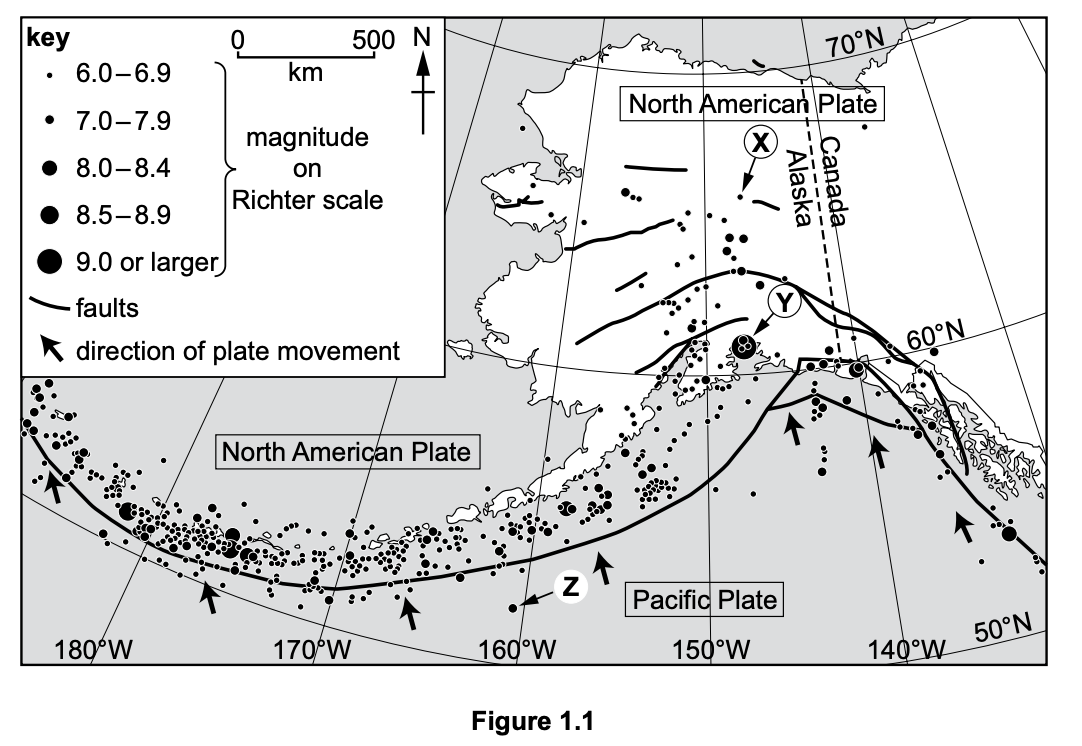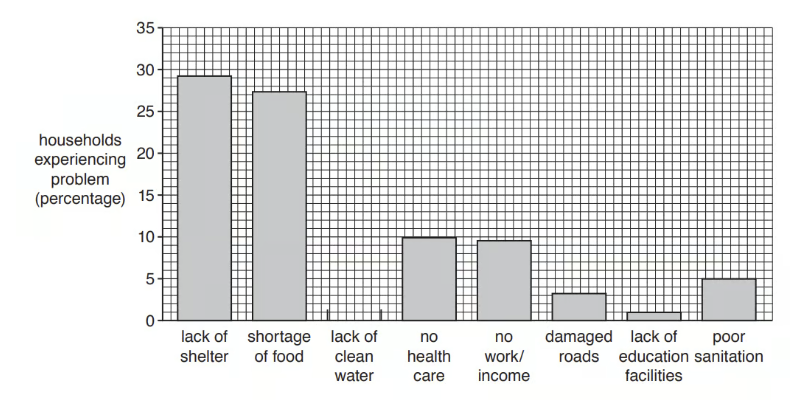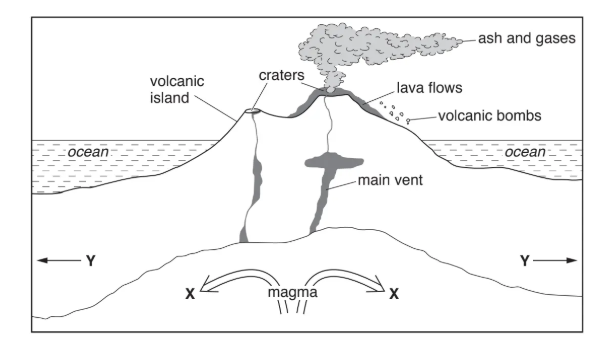Identify the magnitude on the Richter scale of the earthquakes labelled Y and Z in Figure 1.1.

Name two other scales which can be used to measure earthquakes.
Did this page help you?
Syllabus Edition
First teaching 2025
First exams 2027
Exam code: 0460 & 0976
Identify the magnitude on the Richter scale of the earthquakes labelled Y and Z in Figure 1.1.

How did you do?
Name two other scales which can be used to measure earthquakes.
How did you do?
Did this page help you?
Study Fig. 3.1, which shows information about the problems faced by households after an earthquake in Port-au-Prince, Haiti.

Complete Fig. 3.1 by plotting the following information: 13% of households were affected by lack of clean water after the earthquake.
How did you do?
Identify the two main problems caused by the earthquake in Haiti.
How did you do?
Explain why it is necessary to provide clean water and sanitation after an earthquake.
How did you do?
Did this page help you?
Study Fig 4.1, which shows a cross-section through a volcano.

Using Fig 4.1, identify three different hazards caused by a volcanic eruption which may causes injuries, deaths and damage.
How did you do?
Did this page help you?
Study the information in Table 1.
9 July 2019 | 26 July 2019 |
|---|---|
1 death | 8 deaths |
3 injuries | 63 injuries |
119 buildings damaged or destroyed | 19 buildings damaged or destroyed |
Focus 24km deep | Focus 10km deep |
5.6 magnitude | 6 magnitude |
Use Table 1 to compare the impacts of the earthquakes in the Philippines on 9 July and 26 July 2019.
How did you do?
Did this page help you?
Study Fig. 3.2, which shows information about two earthquakes which occurred in 2018.
Venezuela 21 August 2018 The August 2018 Venezuela earthquake measured 7.3 on the Richter scale and was one of the largest earthquakes ever to strike Venezuela. It occurred at a depth of 154 kilometres and was felt as far away as Bogotá, Colombia and Paramaribo, Suriname. The earthquake killed five people. |
Indonesia 28 September 2018 Following the earthquake in Indonesia measuring 7.5 on the Richter scale, at a depth of 20kilometres, a tsunami occurred. This had a height of around 5 to 7 metres, and flooded the settlements of Palu, Donggala and Mamuju. At least 2256 people were confirmed killed, with hundreds more missing. |
Fig.3.2
Using information from Fig. 3.2 only, state three reasons why the earthquake in Indonesia caused more deaths and injuries than the earthquake in Venezuela.
How did you do?
Did this page help you?
Suggest reasons why earthquakes in LICs such as the Philippines have a greater impact than earthquakes in the HICs such as the USA.
How did you do?
Did this page help you?
Explain why earthquakes cause more deaths and injuries than volcanic eruptions.
How did you do?
Did this page help you?
Explain what can be done to reduce the impacts of eruptions on people who live near volcanoes.
How did you do?
Did this page help you?
Explain how new buildings can be earthquake-proofed, so that they are less likely to be damaged in an earthquake.
How did you do?
Did this page help you?
Explain why earthquakes of the same magnitude may have different impacts.
How did you do?
Did this page help you?
Explain why people continue to live in areas vulnerable to tectonic hazards despite the risks.
How did you do?
Did this page help you?
Assess the extent to which technology can reduce the impacts of volcanic eruptions.
How did you do?
Did this page help you?
For a named example you have studied, describe the problems caused by a volcanic eruption.
How did you do?
Did this page help you?
For a named area you have studied, assess the strategies used to reduce the impacts of earthquakes.
How did you do?
Did this page help you?
Explain the reasons why people continue to live in areas of tectonic activity.
How did you do?
Did this page help you?
Assess the effectiveness of different methods used to measure and monitor earthquakes and volcanic activity.
How did you do?
Did this page help you?